- More More
- Blog
- Inspire me
- Groups
- Offers More
- Dive Courses More
- Liveaboards
More

Liveaboard Trips
On-board accommodation offering the opportunity to live right over the dive sites and to experience secluded dives...
Diving regions...
- LATEST AVAILABILITY BY REGION
- Red Sea availability
- Maldives availability
- Indonesian availability
- Socorro Mexico availability
- Galapagos availability
- ALL LIVEABOARD DIVING REGIONS
- Bahamas
- Bikini Atoll
- Caribbean
- Cocos Island
- Destinations
MoreDIVING REGIONS...
Our Top destinations....Why not try....
Find a trip
- Resort
- Liveaboard
Noble Nudibranch
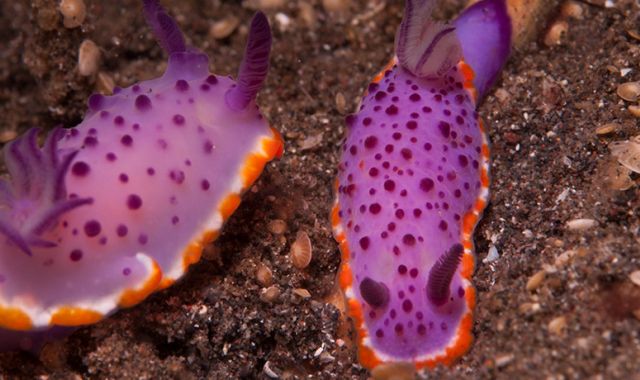
28 Apr 2020, Cath Bates
The sea slug has got to be one of my favourite marine animals. It doesn’t matter if it's the dainty glossodoris or the burly nembrotha – they’re always a joy to see whether in the Philippines or the plush black sands of Sulawesi, both of which have plenty to offer fans of miniscule marine life.
Nudibranch means ‘naked gills’ and these slippery little jewels live their fairly short lives with their gills on the outside of their body. Yet they aren’t afraid of the presence of a human and pose perfectly for the underwater photographer. It is a thrill to frame them as the main subject of a “still” life and catch their bright, delicate gill appendages swaying in the current. Front rhinophores stand to attention like feathers in winter’s first frost and fuchsia-coloured mothers (or is it fathers?) lay delicate egg circles. To appreciate the tiniest nudibranch however you need to be armed with one of two things – a magnifying glass or super macro lens. Only then can you truly witness this colourful underwater creature.
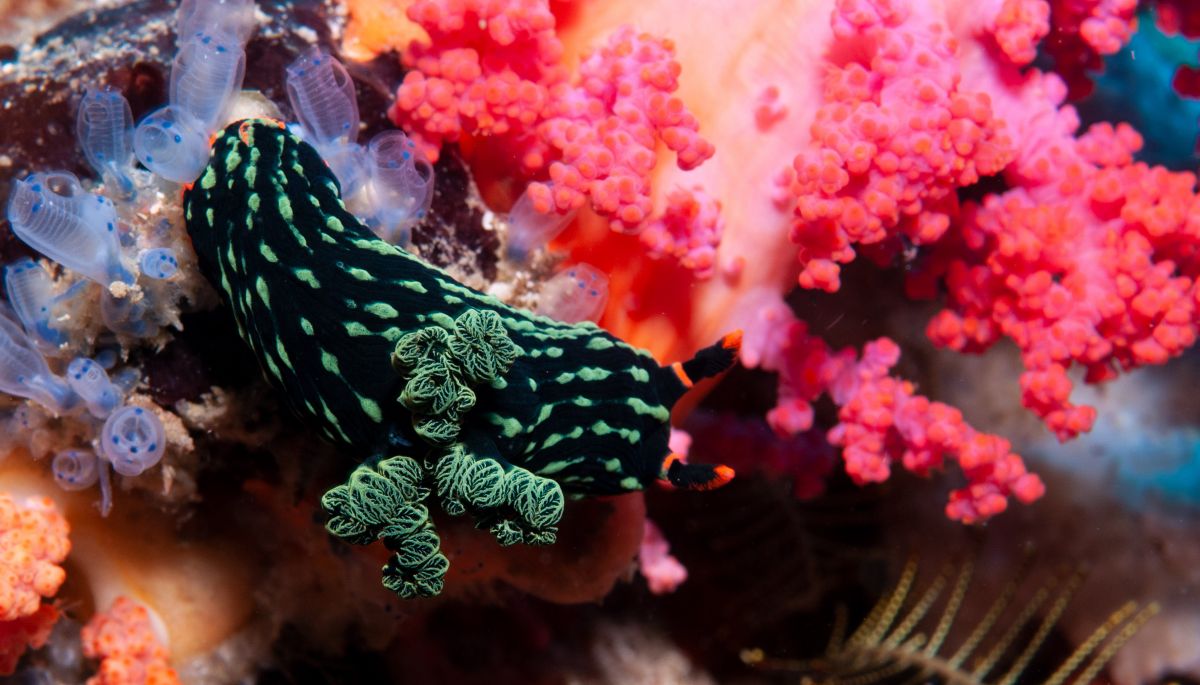
The crème de la crème of the nudibranch photograph is capturing the moment a cleaner shrimp or parasite hitches a ride on their back, an underwater Aladdin on his magic carpet. Every year underwater photographers of all abilities join the Anilao Shootout in Bantangas or the Lembeh Shootout hoping the genie will grant them just one wish: the best images of these beautiful critters.
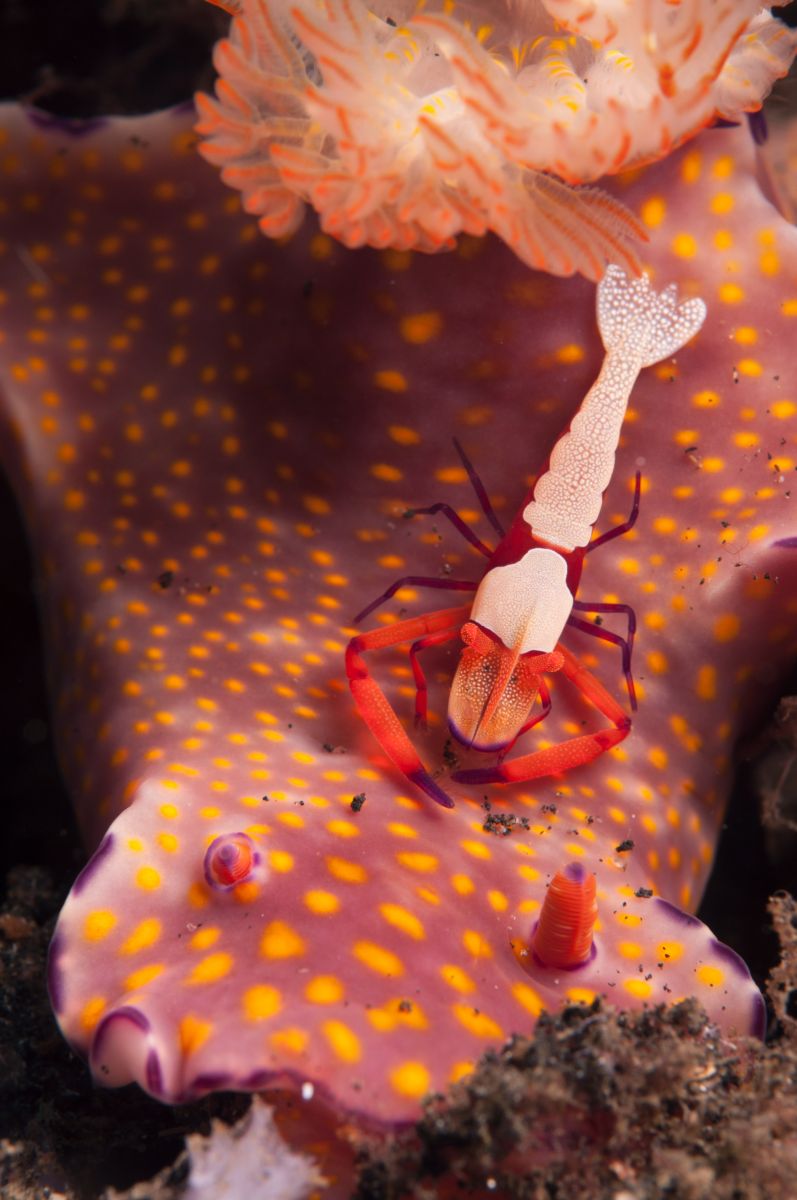
The vivid flecks of dots and dashes along the slug warn predators that they wouldn’t be a tasty meal. They prey on sponges, anemones and other marine life while occasionally even turning to cannibalism! They are very clever when it comes to meal times and have a penchant for turning toxins into defensive mucus. They store stinging cells that they have eaten in their cerata until it is needed for defence.
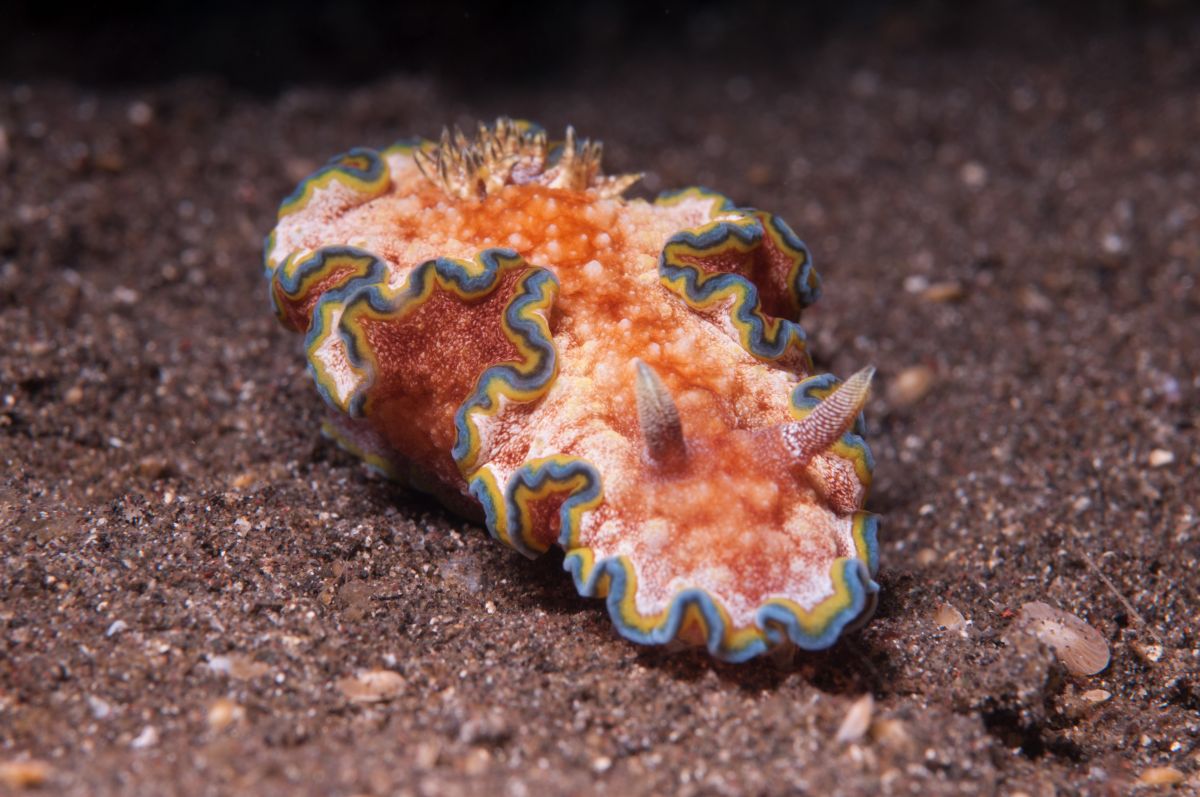
Spotting nudibranchs amongst the sea bed is like looking through a kaleidoscope. Bright lightening-white ardeadoris stand out in a sea of muck in Moalboal, while dark and gloomy funeral jorunna prefer to flaunt their gothic image next to the rainbow colours of the reefs in the Visayas and the Bunaken National Park. The go-faster stripes on a chromodoris give a false sense of speed in this world of the slow! While 'pyjama' usually means bed time in our world, in theirs it is time to get psychedelic! Powder blues and baby pink gastropods rear up like garish mini-pythons as you close in with your strobes primed and ready to flash; blue dragons sway from side to side shrugging their tendrils in the open water with ambitions of becoming alien craft; flabellina curl their back inward like circus acrobats.
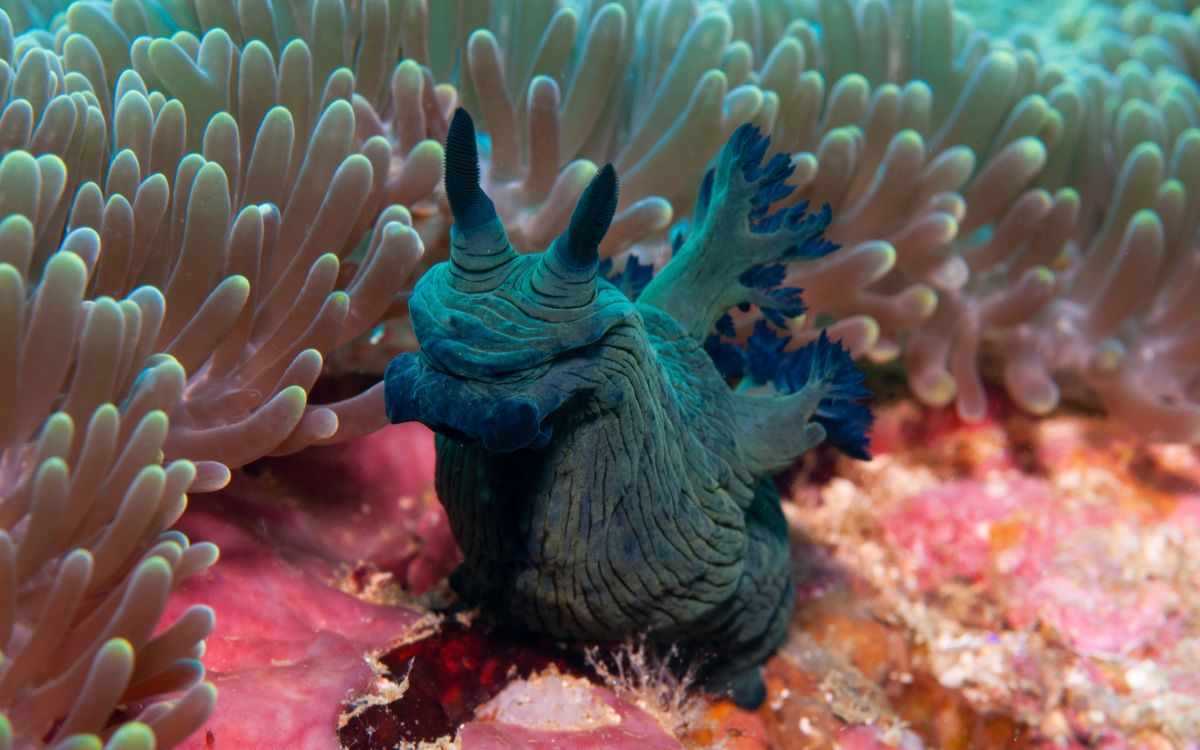
Phyllidiella pustulosa, phyllidiopsis, ocellated wart slugs, nebrotha guttata – how on earth did scientists come up with such ugly names for these stunningly surreal creatures??
Images by Cath Bates




